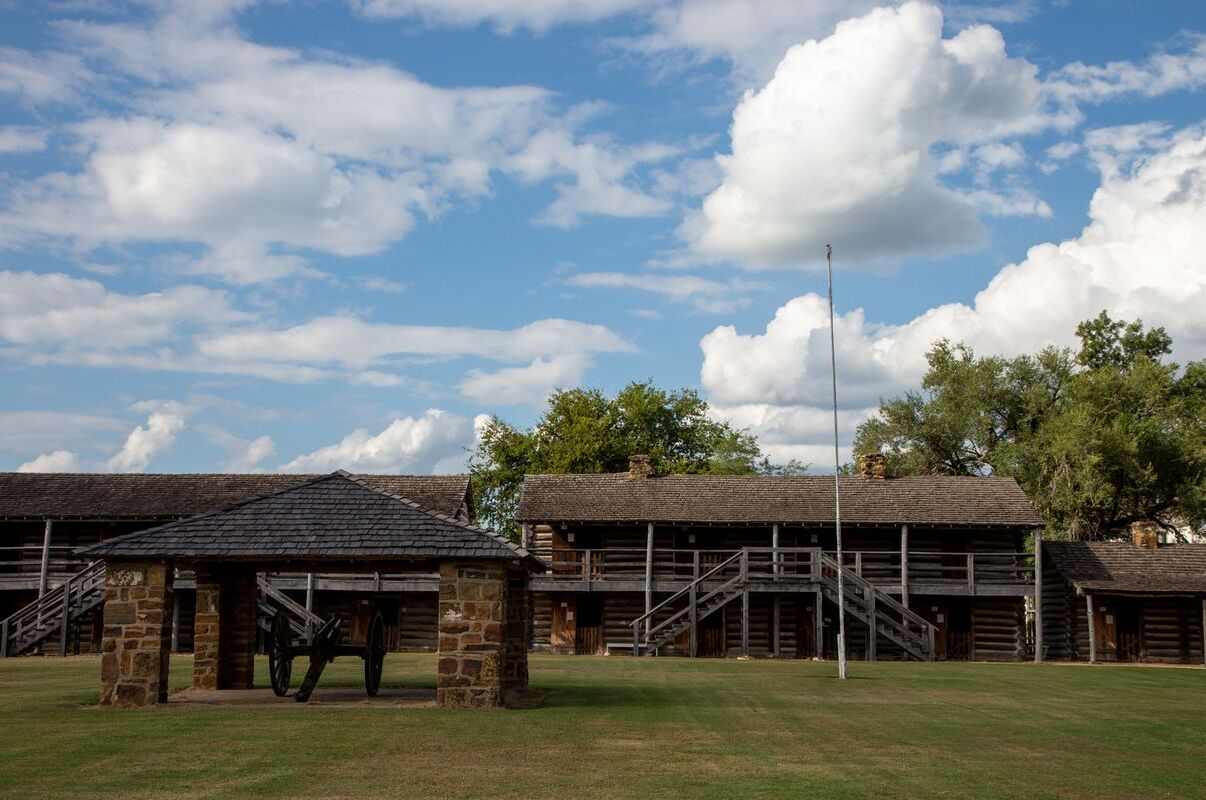Secrets Of Oklahoma’s Forgotten Fort

Ever wondered about the hidden gems in Oklahoma? Oklahoma's forgotten forts offer a peek into the past, showcasing rich history and untold stories. These forts, once bustling with activity, now stand as silent witnesses to bygone eras. Visiting these sites can transport you back in time, giving a glimpse of life during the frontier days. Whether you're a history buff or just curious, exploring these forgotten forts can be a thrilling adventure. From Fort Gibson to Fort Washita, each location has unique tales waiting to be uncovered. Ready to step into history? Let's dive into the secrets of Oklahoma's forgotten forts!
Secrets of Oklahoma's Forgotten Forts
Oklahoma's history is rich with tales of frontier life, Native American culture, and military outposts. Hidden among the state's rolling plains and dense forests are remnants of forts that once played crucial roles in shaping the region. These forgotten forts offer a glimpse into the past, waiting to be explored.
Fort Gibson: The Gateway to the West
Fort Gibson, established in 1824, served as a critical military post during the Indian Removal Act and the Civil War. It was a bustling hub for soldiers, traders, and Native Americans.
- Historic Site: The fort's reconstructed buildings and museum provide a vivid picture of 19th-century military life.
- Trail of Tears: Fort Gibson was a key stop on the Trail of Tears, where thousands of Native Americans passed through during their forced relocation.
- Civil War History: The fort played a significant role in the Civil War, with both Union and Confederate troops occupying it at different times.
Fort Towson: A Frontier Outpost
Fort Towson, established in 1824, was one of the earliest military posts in the region. It served as a buffer between the United States and Mexico and later became a vital supply depot during the Civil War.
- Historic Ruins: Visitors can explore the remains of the original fort structures, including barracks and officers' quarters.
- Museum: The onsite museum offers artifacts and exhibits detailing the fort's history and its role in the Civil War.
- Scenic Trails: Surrounding the fort are beautiful trails perfect for hiking and taking in the natural beauty of southeastern Oklahoma.
Fort Washita: A Cultural Crossroads
Fort Washita, established in 1842, was a key military post during the Indian Territory period. It served as a meeting point for various Native American tribes and U.S. military forces.
- Restored Buildings: The fort features several restored buildings, including the barracks and officers' quarters, giving visitors a sense of life in the mid-1800s.
- Living History Events: Fort Washita hosts reenactments and living history events, bringing the past to life with costumed interpreters and demonstrations.
- Cemetery: The fort's cemetery is the final resting place for many soldiers and their families, offering a poignant reminder of the fort's historical significance.
Fort Reno: A Post-Civil War Stronghold
Fort Reno, established in 1874, was built to protect settlers and railroad workers from Native American raids. It later became a remount station for the U.S. Army during World War I and World War II.
- Historic Buildings: The fort's well-preserved buildings include the chapel, officers' quarters, and stables.
- Museum and Visitor Center: The museum provides exhibits on the fort's history, including its role in the Indian Wars and as a remount station.
- Annual Events: Fort Reno hosts several annual events, such as ghost tours and historical reenactments, offering unique ways to experience its history.
Fort Sill: A Modern Military Base with Historic Roots
Fort Sill, established in 1869, remains an active military base today. It has a rich history, having played a significant role in the Indian Wars and serving as a training ground for soldiers during both World Wars.
- National Historic Landmark: The fort's historic district includes several buildings from the 19th century, preserved as a National Historic Landmark.
- Museum Complex: The Fort Sill National Historic Landmark and Museum complex offers extensive exhibits on the fort's history and its ongoing military significance.
- Geronimo's Grave: The famous Apache leader Geronimo is buried at Fort Sill, making it a site of historical and cultural importance.
Hidden History Awaits
Oklahoma's forgotten forts hold stories waiting to be discovered. These historical sites offer a glimpse into the past, showing how life once was on the frontier. Visiting these forts can be a unique adventure, blending education with exploration. Each fort has its own tale, from military strategies to daily life in the 1800s. Exploring these places can be a fun way to learn about history outside of a textbook. Whether you're a history buff or just looking for a new place to visit, these forts provide a fascinating look into Oklahoma's past. So next time you're planning a trip, consider adding one of these hidden gems to your itinerary. You'll walk away with a deeper appreciation for the state's rich history and maybe even a few stories of your own to tell.

